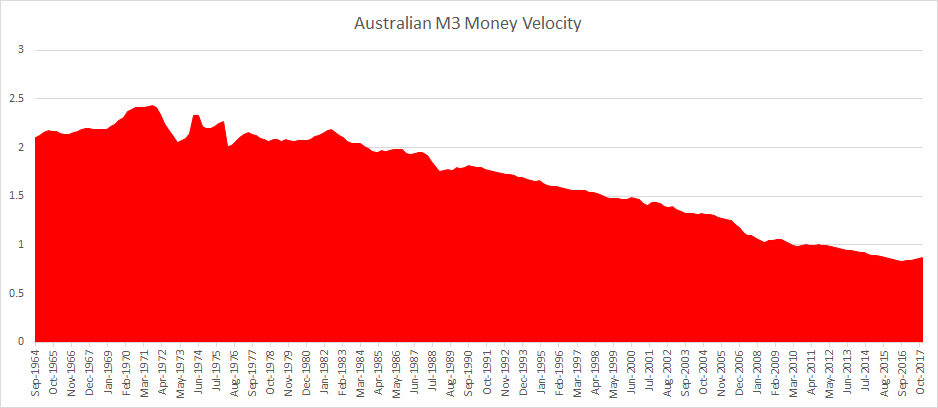
We couldn’t find any official Money Velocity numbers for Australia so calculated it using the Equation of Exchange.
Equation of Exchange
MV=PQ
Money Supply (M) * Money Velocity (V) = Price level (P) * Real economic output (Q)
Which means Money Supply * Money Velocity = Nominal GDP
Therefore, Money Velocity = Nominal GDP/Money Supply
We have the numbers for both Money Supply (from the Reserve Bank of Australia) and Nominal GDP (Australian Bureau of Statistics) for Australia.
Money Velocity
The velocity of money is the frequency at which one unit of currency is used to purchase domestically- produced goods and services within a given time period. In other words, it is the number of times one Australian Dollar is spent to buy goods and services per unit of time. If the velocity of money is increasing, then more transactions are occurring between individuals in an economy.
The frequency of currency exchange can be used to determine the velocity of a given component of the money supply, providing some insight into whether consumers and businesses are saving or spending their money.
Money Supply or Money Stock (we have considered M3)
Broad Money M3: Broad money (M3) includes currency, deposits with an agreed maturity of up to two years, deposits redeemable at notice of up to three months and repurchase agreements, money market fund shares/units and debt securities up to two years.
M3 Money Velocity for Australia
Here is a graph of M3 Money Velocity for Australia (the complete data set is at the end of this post, please contact us if you would like the data in a spreadsheet),

Money velocity in Australia is currently less than 1 which means that money being printed (even notionally) isn’t even circulating once. It has fallen significantly this century, it has started increasing as GDP growth is accelerating and Money Supply growth is decelerating. The complete data set is at the end of this post, please contact us if you would like the data in a spreadsheet.
M3 Money Stock or Money Supply for Australia is bigger than the GDP of Australia and stands at a record of $2.1 trillion Australian Dollars.
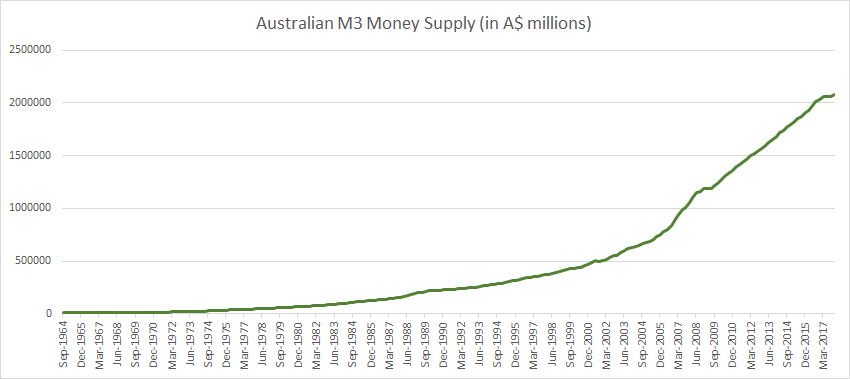
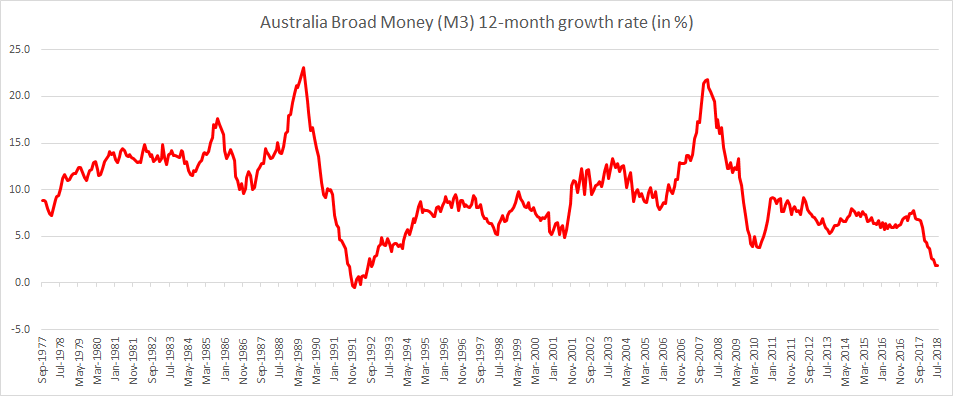

Given that money velocity is so low now implies
1. Consumer and business confidence for spending isn’t particularly high.
2. Consumers and businesses aren’t borrowing too much money either.
3. There is ample (probably excessive) liquidity in the system.
We have seen recently that Australian credit growth is slowing with Investor housing credit growth slowest ever.
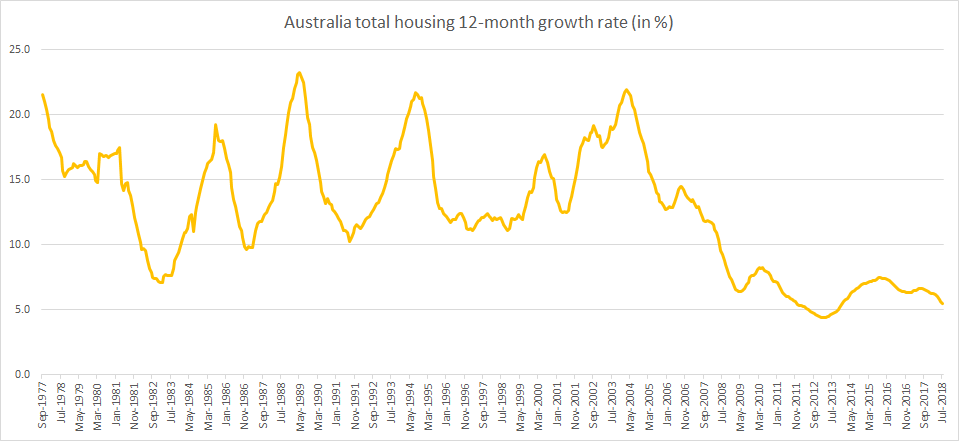
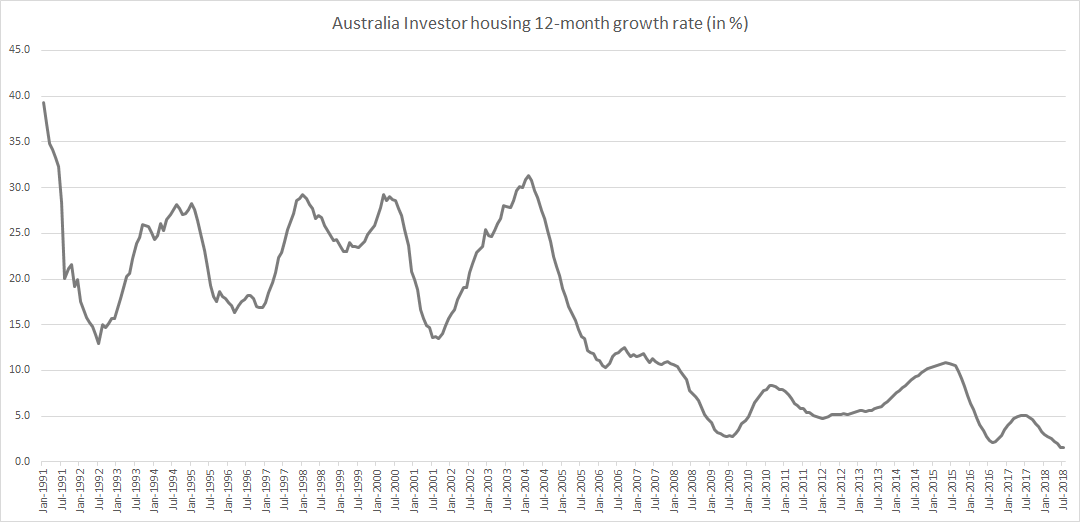
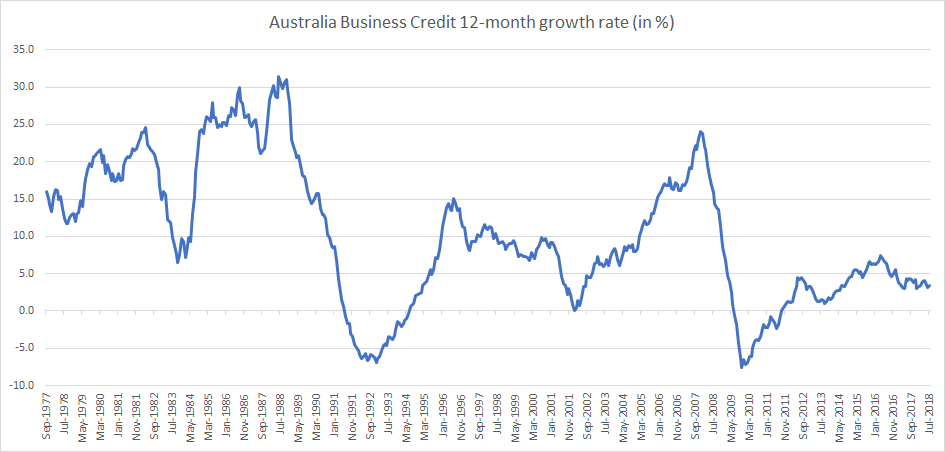
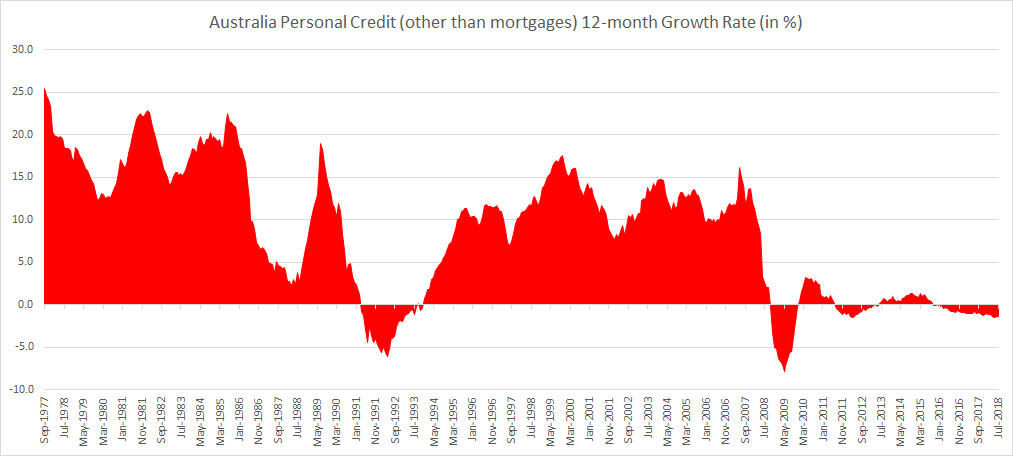
Total Mortgage debt outstanding stands at A$1.78 trillion, about 100% of GDP.
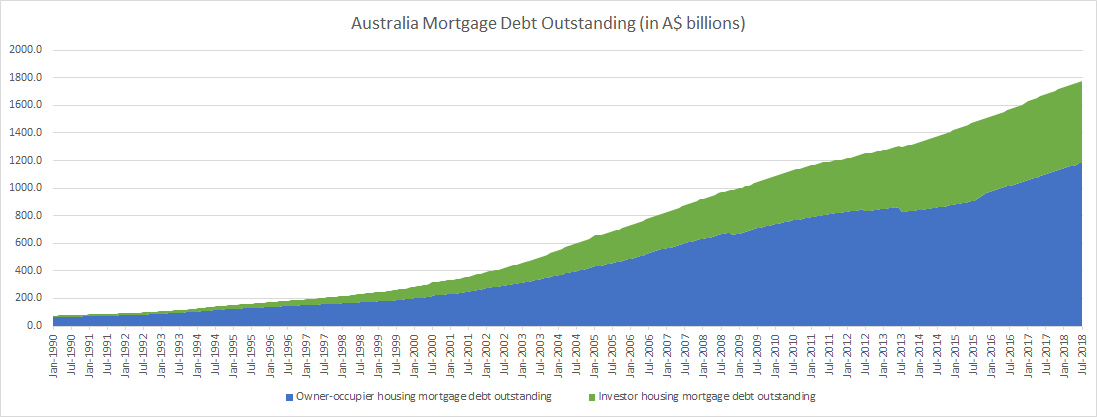
Related:
The curious case of low U.S. money velocity
Euro Area or Eurozone Money Velocity seems to be shockingly low
Data:
